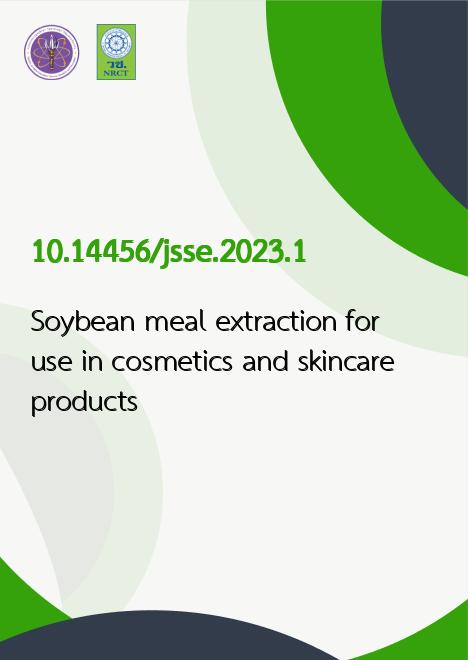
|
Soybean meal extraction for use in cosmetics and skincare products |
|---|---|
| รหัสดีโอไอ | |
| Creator | Onuma Phankhat |
| Title | Soybean meal extraction for use in cosmetics and skincare products |
| Contributor | Attapon dongsawan, Tanawan Phankhat, Ramita Chaisrisoponkij, Patcharawan Chantaramongkol, Boon-ek Yingyongnarongkul |
| Publisher | Faculty of Science, Ubon Ratchathani University |
| Publication Year | 2566 |
| Journal Title | Journal of Science and Science Education |
| Journal Vol. | 6 |
| Journal No. | 1 |
| Page no. | 1-9 |
| Keyword | Extract, stachyose, carbohydrates, oligosaccharide, moisturizer |
| URL Website | https://so04.tci-thaijo.org/index.php/JSSE |
| Website title | Journal of Science and Science Education |
| ISSN | ISSN 2697-410X |
| Abstract | Soybean (Glycine max (L.) Merr.), also called soja bean or soya bean. The annual soybean legume of the Fabaceae family and a species of legume native to East Asia. The soybean is economically the most important bean, used in the soy milk production industry and soybean oil production. From such initiatives, there will be a large amount of soybean meal from various production processes. The leftover soybean meal from the production process will be used as animal feed. Consequently, our research focuses on soybean meal extraction, a by-product of the food industry. To study and develop crude extracts used as ingredients in cosmetics and skincare products. The soybean meal extraction method was extracted with 70% Methanol at room temperature for 72 hours andfiltered. The solvent was evaporated and precipitated with acetone. The results found that the crude extract of soybean meal from soy milk production and soy oil production industry was 200 and 300 g, and the yield was 20.0% and 25.0% (g/g of soybean meal), respectively. It was also found that only the crude extracts from the soy oil production industry were precipitated. The weight of the precipitate obtained from the precipitation process was 11.69 g, and the yield was 3.4% (g/g of crude extracts). The data from spectroscopy analysis indicates that the precipitates are a group of stachyose (Tetrasaccharide), a type of oligosaccharide. The compounds in the stachyose or sugar group have properties as a moisturizer to retain moisture in the skin, improve skin hydration, and exfoliate old skin cells. They could thus be used in skincare or antiaging applications. Therefore, the substances obtained from this research can be developed as a component in cosmetic and skincare products. |